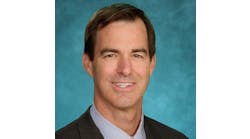As an increasing number of physicians continue moving away from working in private practice, a new analysis from the American Medical Association (AMA) details some of the factors responsible for the decisions, and how the shift is affecting younger generations of physicians.
According to the AMA analysis titled, “Recent Changes in Physician Practice Arrangements: Shifts Away from Private Practice and Towards Larger Practice Size Continue through 2022,” research showed that between 2012 and 2022 the share of physicians who work in private practices dropped 13 percentage points, from 60.1 percent to 46.7 percent. As noted by Carol K. Kane, PhD, director of economic and health policy research at the AMA, and author of the report, “Those percentages include physicians who have an ownership share in the practice, as well as those who are employed in the practice (typically younger physicians) or contract with the practice.”
In addition, the share of physicians directly employed by or contracted with a hospital “increased from 5.6 percent to 9.6 percent, and those who worked in a hospital-owned practice rose from 23.4 percent to 31.3 percent. Practice size has also changed. The percentage of physicians in practices with 10 or fewer physicians dipped from 61.4 percent to 51.8 percent, while those in practices with 50 or more physicians grew from 12.2 percent to 18.3 percent.”
The analysis also found that found 44 percent of physicians were owners, 49.7 percent were employees and 6.4% were independent contractors in 2022. These percentages contrast findings from 2012, “when 53.2 percent of physicians were owners, as well as the mid-2000s when around 61% of physicians were owners, and the early 1980s, when the ownership share was around 76 percent.”
Commenting on the shift in age groups, Kane said, “When you look at young physicians today and compare them with young physicians from just 10 years ago, you see a dramatic change in behavior,” noting that the number of physicians under 45 who were owners dropped more than 12 percentage points from 2012 to 2022, from 44.3 percent to 31.7 percent.
According to the survey’s data, the “most cited reason for hospital and health system acquisition had to do with payment,” Kane wrote. Eight in 10 physicians surveyed said the need to negotiate higher payment rates was a very important or important “reason as to why their practice was sold to or acquired by a hospital or health system.” Also reported by Kane was the need to better manage payers’ regulatory and administrative requirements, and the need to improve access to costly resources, each of which was chosen as either very important or important to their decision by 70 percent of respondents.


